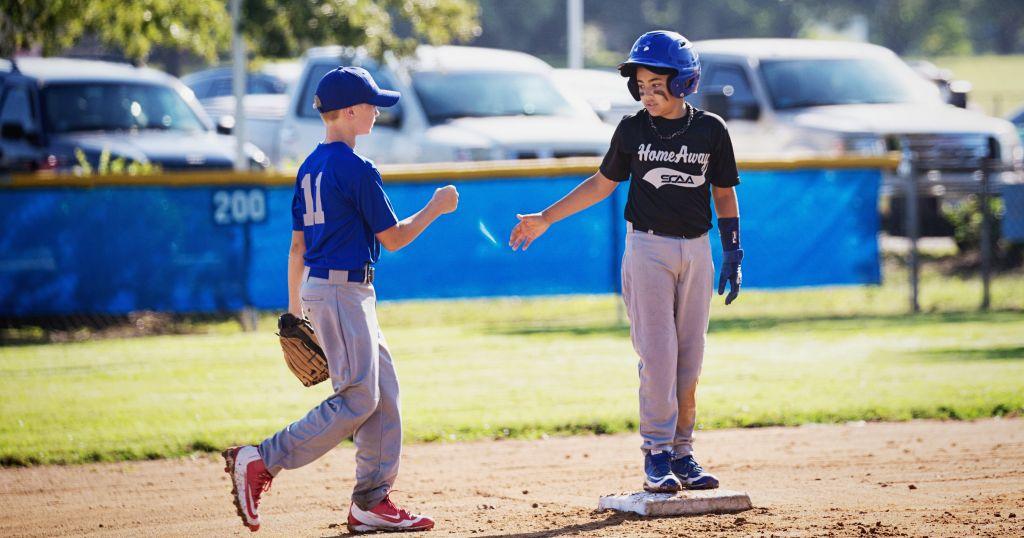
7 Trends in Sports Sponsorships To Look Out For
Posted in:
The world of sports sponsorship is gearing up for another transformative year. The union between sports and brands continues to evolve; and 2023 laid down the foundation for change, from the introduction of new sponsorship media with emerging sports, to the increased attention on women’s leagues.
From digital revolutions to sustainable initiatives, let’s dive into the trends that industry reports and experts predict we’ll see in the new year.

Youth Sports Sponsorships
Youth sports sponsorships are an investment in the future by supporting the journey of young athletes. At the core of youth sports are communities. Youth sports sponsorships allow brands to directly connect with families in the communities they serve. Community engagement, combined with high-impact media sets youth sports sponsorships apart from other types of brand partnerships.
Learn more by reading the ultimate guide to youth sports sponsorships.
Women’s Sports
According to Sports Innovation Lab only 9% media budgets were spent on women’s sports in 2023, yet 83% of brands plan to increase spending in 2024.
From record-setting attendance numbers, viewership spikes, and new deals, we can predict that brand deals with top female athletes will continue to grow in demand in 2024. In 2022, sponsorship deals for women athletes grew 20%, according to SponsorUnited, and in 2023 the FIFA Women’s World Cup sold more than 1.5 million tickets, exponentially surpassing the 2019 FIFA Women’s World Cup ticket sales. Other brands took notice, with Google announcing a multi-year partnership with The Athletic promising to double the coverage of women’s sports and Ally Financial sealing a multimillion-dollar deal across ESPN networks committing 90% of its media dollars on women’s sports.

Community-First
Community marketing has long been a powerful strategy to connect brands and their target audiences on a deeper and more local level. A trend we expect to see more of in the new year is a community-first mindset for brands, focussing their communications and campaigns on the “why” and overall impact of their marketing dollars.
e.l.f. SKIN created a community-first marketing campaign, ‘Show Your best e.l.f [self]’ campaign. The contest was designed to highlight young female athletes shining in the skin they are in. The contest required a written or audio recording of an original team cheer for a chance to win one of three $5000 prizes from e.l.f. SKIN and TeamSnap.
This campaign encouraged community involvement in an authentic way, and showcased how the brand values engaging with everyday consumers.

First-Party Data
First-party data plays a crucial role in sports sponsorships by creating personalized fan experiences. In Google’s final phase-out of the third-party cookie in 2024, first-party data will become more important than ever.
By analyzing fan interactions on digital platforms, sponsors can tailor content, promotions, and activations to align with individual preferences. This personalization not only enhances fan engagement, but also strengthens the connection between the fan and the sponsoring brand.
First-party data also serves as a foundation for measuring and optimizing the return on investment (ROI) of sports sponsorships. Marketers can analyze data on fan engagement, conversion rates, and brand sentiment to assess the impact of their sponsorship activities. This insight enables sponsors to refine their strategies, allocate resources more efficiently, and maximize the effectiveness of future sponsorships. By understanding which activations resonate most with their audience, brands can make informed decisions to enhance their overall sponsorship performance.

Digital Integration
As publishers continue to introduce new virtual experiences and events, brands will participate at greater levels.
Virtual Events and Experiences
With the increasing prevalence of virtual events, brands are likely to sponsor and host online experiences. This could include virtual sports events, interactive fan experiences, and live-streamed behind-the-scenes content. Digital platforms provide a global stage for sponsors to engage with audiences regardless of geographical constraints.
When Reality Becomes Augmented Reality (AR) and Virtual Reality (VR)
Expect more brands to incorporate AR and VR technologies into sponsorship strategies. AR can enhance in-person experiences, such as providing additional information about sponsored products when users scan logos or products. VR can transport fans to immersive virtual environments, creating unique and memorable interactions with their favorite sports.

Sustainability
The 2024 sports sponsorship landscape is becoming a canvas for sustainability-focused collaborations that not only enhance brand reputation, but also contribute to the larger global effort to resolve climate change.
From reducing carbon footprints to adopting sustainable materials in merchandise, the sports industry is becoming a catalyst for positive environmental change.
Major sporting events are turning green, with sponsors leading the charge toward a more sustainable future. Imagine a stadium where every cheer for the home team is accompanied by a collective pledge to reduce single-use plastics.
Brands are no longer satisfied with visibility; they seek resonance with fans who, too, are increasingly environmentally conscious. The partnership between sports and sustainability is a win-win, with brands gaining affinity and fans participating in a collective movement for a greener tomorrow.
Gamification
Gamification is a way to integrate game-like elements into, really anything. Gamification could be a key part of the future of sports sponsorships because of the prevalence of virtual competition, fantasy leagues, and interactive games. Brands that sponsor digital gaming experiences bring fans into the competitor mindset and strengthens engagement.
Gamification allows sponsors to organize challenges, quizzes, and interactive contests, providing fans with a platform to showcase their knowledge, skills, and passion for the sport. These virtual engagements deepen the connection between fans and sponsors, fostering a sense of community and brand loyalty.
Fantasy sports leagues have long been popular, but the integration of sponsorships takes it to the next level. Brands can sponsor fantasy leagues and introduce predictive gaming elements, where fans make predictions about match outcomes, player performances, or specific in-game events. This not only enhances fan engagement but also creates opportunities for sponsors to reward accurate predictions with exclusive incentives.
Loyalty programs are a new avenue where gamification has taken off. Fans or customers can earn points, badges, or exclusive rewards by actively engaging with sponsored content, attending events, or participating in challenges. This not only incentivizes fan participation but also provides sponsors with valuable data on fan preferences and behaviors.
